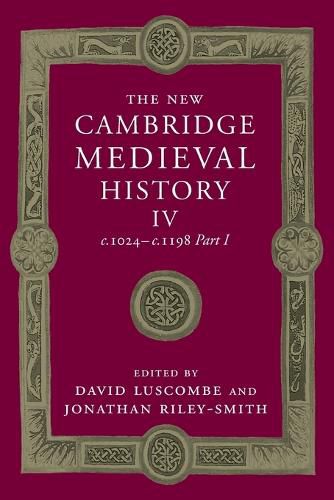Readings Newsletter
Become a Readings Member to make your shopping experience even easier.
Sign in or sign up for free!
You’re not far away from qualifying for FREE standard shipping within Australia
You’ve qualified for FREE standard shipping within Australia
The cart is loading…






The fourth volume of The New Cambridge Medieval History covers the eleventh and twelfth centuries, which comprised perhaps the most dynamic period in the European middle ages. This is a history of Europe, but the continent is interpreted widely to include the Near East and North Africa as well. The volume is divided into two parts of which this, the first, deals with themes, ecclesiastical and secular, and major developments in an age marked by the expansion of population, agriculture, trade, towns and the frontiers of western society; by a radical reform of the structure and institutions of the western church, and by fundamental changes in relationships with the eastern churches, Byzantium, Islam and the Jews; by the appearance of new kingdoms and states, and by the development of crusades, knighthood and law, Latin and vernacular literature, Romanesque and Gothic art and architecture, heresies and the scholastic movement.
$9.00 standard shipping within Australia
FREE standard shipping within Australia for orders over $100.00
Express & International shipping calculated at checkout
Stock availability can be subject to change without notice. We recommend calling the shop or contacting our online team to check availability of low stock items. Please see our Shopping Online page for more details.
The fourth volume of The New Cambridge Medieval History covers the eleventh and twelfth centuries, which comprised perhaps the most dynamic period in the European middle ages. This is a history of Europe, but the continent is interpreted widely to include the Near East and North Africa as well. The volume is divided into two parts of which this, the first, deals with themes, ecclesiastical and secular, and major developments in an age marked by the expansion of population, agriculture, trade, towns and the frontiers of western society; by a radical reform of the structure and institutions of the western church, and by fundamental changes in relationships with the eastern churches, Byzantium, Islam and the Jews; by the appearance of new kingdoms and states, and by the development of crusades, knighthood and law, Latin and vernacular literature, Romanesque and Gothic art and architecture, heresies and the scholastic movement.